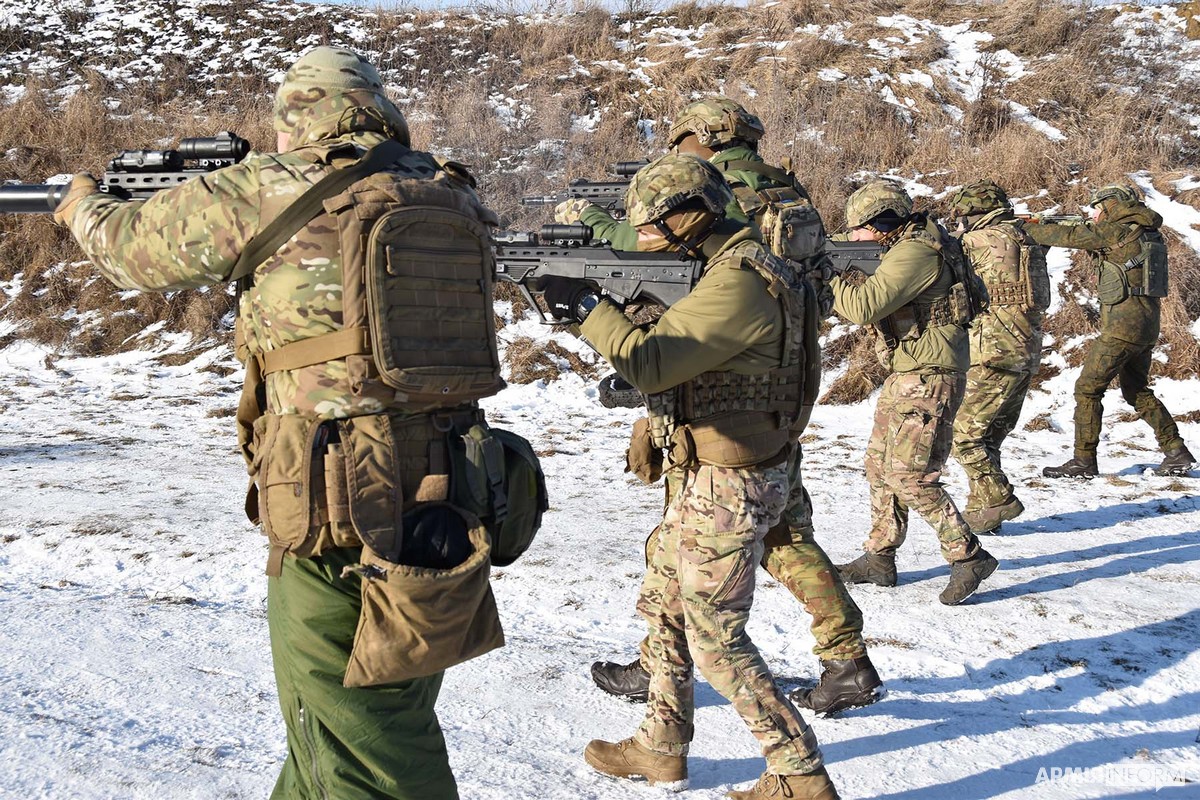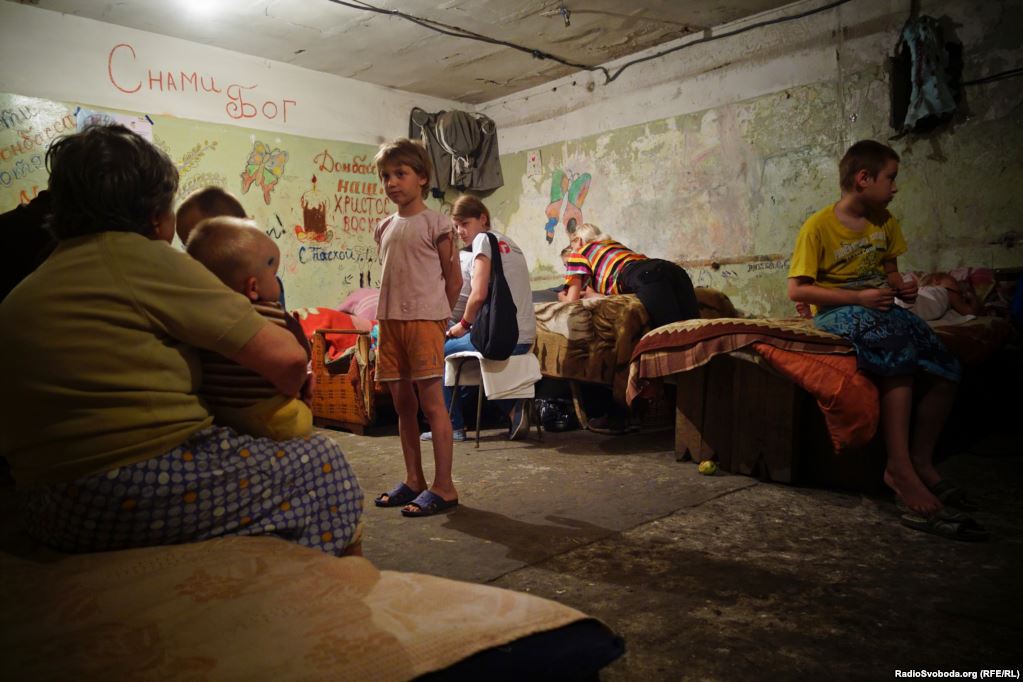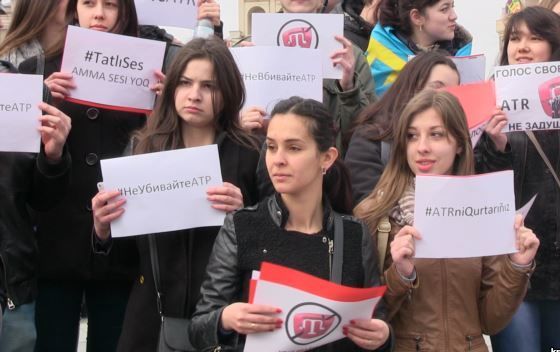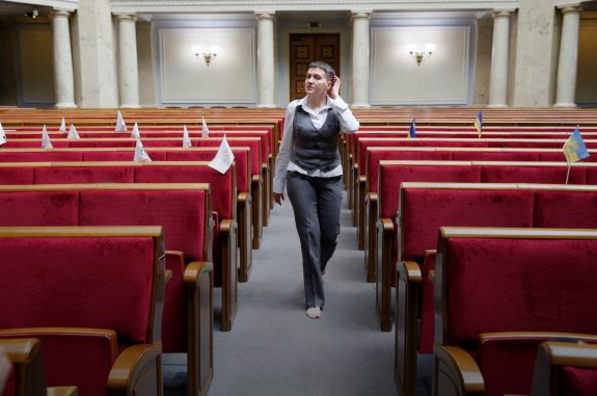The Ukrainian army has gone a long way since its first standoff with the Russian army in 2014. Since that time, Ukraine has trained and expanded its army, but Russia has not stood still, either. What are the major changes in the army, how has the battlefield changed in Donbas, and how prepared is Ukraine to fight Russia now?
Facts and figures in the Russo-Ukrainian war
Unfortunately, numbers and statistics are somewhat harsh and dry in a war, but they make us stop and think about what should be and can be realistically done.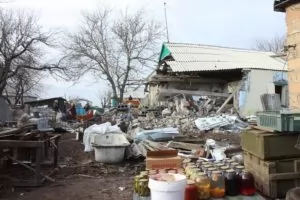
- In 2020, Ukrainian military casualties: 55 soldiers, including one woman (Klavdiya Sytnyk)
- In 2021, military fatalities rose to 80
- 13,200–13,400 people killed (approximately 3,901 civilians, about 4,200 Ukrainian servicepersons, and 5,800 Russian-backed militants)
- 29,600–33,600 people wounded (7,000–9,000 civilians, 9,800–10,800 members of the Armed Forces of Ukraine, and 12,800–13,800 occupiers)
- 14,000 people killed, including 4,619 Ukrainian military personnel and 5,768 Russian-backed militants
The ceasefires: myth, not reality
On July 22, 2020, the Trilateral Contact Group on Ukraine (TCG) - a platform where representatives from Ukraine, Russia and the Organization for Security and Co-operation in Europe (OSCE) discuss the resolution of the war in eastern Ukraine - reached a new agreement on measures to strengthen the ceasefire along the frontline in the Donbas. The new agreement took effect on July 27, 2020. There was, indeed, a decrease in the number of attacks/shelling in the first few months, but, like previous ceasefires, it crumbled quickly and without obvious reasons or warning. On July 27, 2020, protesters rallied near the President’s Office in Kyiv against the new "ceasefire" in the Donbas, which most Ukrainians saw as defeat and concessions in the Russo-Ukrainian war. Since the start of the war, there have been over 29 ceasefires (harvest ceasefire, school ceasefire, Christmas ceasefire, etc.), each intended to remain in force indefinitely, but none of them have stopped the violence. The new Minsk Agreement (Minsk-II) was signed by Russian President Vladimir Putin, Ukrainian President Petro Poroshenko, French President Francois Hollande, and German Chancellor Angela Merkel on February 12, 2015. A mere two months later, the Ukrainian army began losing dozens of soldiers. History has repeatedly shown that these so-called “ceasefires” are more beneficial to Russia and to Europe’s immediate self-satisfaction than to Ukraine.
- strengthening their positions
- carrying out troop rotations; building up units
- deploying new equipment, fuels and lubricants, ammunition
- Russian UAVs followed Ukrainian units almost 24/7 in search of weakness and targets
- conducting major exercises
- enemy snipers continued to work relentlessly in the rear
Changes in Russia’s strategy
Having gained more time with the “ceasefire”, the Russian military used it extensively to train and build up their active personnel. They also changed their tactics, going from large-scale shelling to targeted, surgical strikes. The first major alarm sounded in the fall of 2020, the second stage followed in February-March 2021, when another batch of UAVs - modified Orlan-10 - was brought into the occupied territories from Russia. As a result:- Over 30 targeted artillery strikes hit command and rear command posts of Ukrainian battalions and brigades (Avdiivka, Pisky, Halytsynivka, Taramchuk, Muratovo, etc).
- This was possible thanks to these Russian UAVs, which provided comprehensive information on Ukrainian troop location and movement. Russian Orlans, capable of transmitting video footage 120 km away, regularly flew over and crossed the demarcation line in 2021.
- Thus, Russian hybrid forces were able to easily use 122mm caliber artillery (90% of all artillery shelling in the Donbas) to target designated localities in the Donbas. LRS Grads, battle tanks, 152mm and 122mm artillery, 120mm and 82mm mortars are all banned under Minsk.
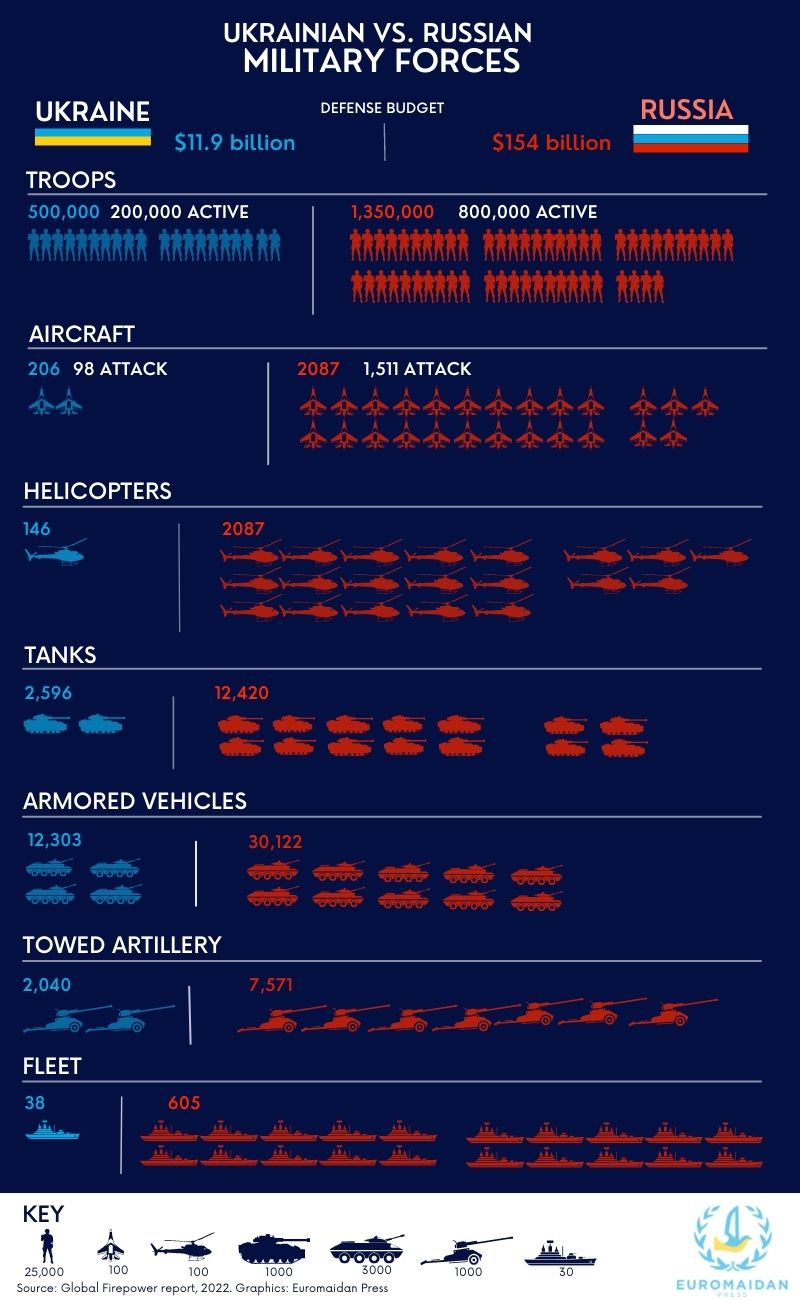

NATO standards. Where does Ukraine stand in 2021?
Ukraine’s new Military Security Strategy, adopted in March 2021, is based on the concept of comprehensive security. The concept is implemented within the Network Centric Warfare (NCW), which envisages the creation of an information exchange network using modern communication, reconnaissance systems and decentralized command. Mykhailo Samus, Director at the New Geopolitics Research Network, affirms that whoever adopts this system will win as NCW generates higher combat readiness, increased speed of command, high tempo of operations, greater lethality, and a level of self-synchronization. Samus points to the Caucasus where Azerbaijani forces effectively used NCW against Armenia in the 44-day war in Nagorno Karabakh in 2020. As to Ukraine, NATO standards have gradually replaced old Soviet traditions in the high command. JFO can now form combined groups taken from different branches (land, navy, aviation, marine and airborne forces, reconnaissance, etc) and deploy them under a united command for a defined military operation, thus increasing the speed and effectivity of the mission.“The second most important component of the NCW concept is the use of reconnaissance and attack drones, namely Turkish Bayraktars, which provide precise reconnaissance information about the enemy and carry out surgical strikes. All this should be placed under a unified automated management system that allows the command to make split second decisions and not wait hours or days for a response from headquarters, like it used to be in the past. This is what happened in 2014, when in many instances it took literally hours or even days to reach the high command and make a decision, thus allowing the enemy more time and greater leeway to carry out their plans.” underlines Samus.Samus states that another great leap forward was the signing in June 2021 of the Naval Capabilities Enhancement Program between the UK, Ukraine and industry, which calls for the delivery of new naval platforms and defensive shipborne armaments, the training of Ukrainian Navy personnel, the creation of new naval bases (in the Azov and Black Seas), as well as the agreement between a Turkish state-controlled defence technologies company and a Ukrainian shipyard to produce Ada-class corvettes, and, additionally, a contract with the US on 16 Mark-VI patrol boats for the Ukrainian Navy. Finally, in March/April 2021, the Ukrainian Navy obtained the first units of the Ukrainian-produced RK-360MC Neptune cruise missile.

“I can’t say that there were major changes. Nothing new or revolutionary took place. About eight brigades are constantly deployed along the front lines. These are our soldiers who are preparing, training for real combat… not just some paper war. Of course, enhanced military drills with our partners were an important aspect of 2021 – Rapid Trident, Sea Breeze, etc.”However, two important documents were introduced in 2021 – the new Defense Strategy, adopted in March 2021 and the Strategic Defence Bulletin, signed into effect by the president on September 17, 2021 (it outlines Ukraine’s military policy and strategic goals up to 2025). Bielieskov also mentions the importance of the law on basics of national resistance, which came into force on January 1, 2022.
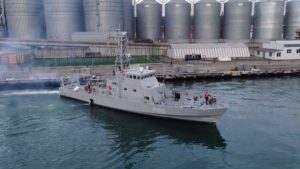
New appointments
Many Ukrainian experts are convinced that the best news in the country’s military circles was the dismissal of the Minister of Defence Andriy Taran and Commander-in-Chief of the Armed Forces of Ukraine Ruslan Khomchak. The reasons for their dismissal:- Hands-on control of the army
- Incomprehensible and useless rearmament schemes
- Corruption schemes
- The public confrontation between the General Staff and the Ministry of Defence
- Failed orders for Ukraine’s defense sector and complete lack of international relations

“The Ukrainian Armed Forces have developed greatly since 2014. This from a combination of war, allied training and NATO exercises. It is a work in progress. Some areas of culture still need to change. Russia has also developed but with a much greater budget, a heavy exercise schedule and experience from wars in the Donbas, Syria and Libya. Russia is stronger, but the Ukrainian army has very high morale and will not let Russia have an easy time.” underlines Glen Grant, defence expert, Baltic Security Foundation.
What to expect in 2022
Given the current state of affairs, it is very difficult for anyone to predict what might happen in the ensuing months. The international community is fully focused on the build-up of Russian troops all along Russia’s thousand-kilometer border with Ukraine, as well as on Russia’s joint drills and cooperation with the Belarusian army and government. In the meantime, the Kremlin has been moving troops toward the border with Ukraine while demanding Washington guarantee that Ukraine will not join NATO and that the Alliance will refrain from certain military activities in and around Ukrainian territory. Russia’s appetite has not disappeared, as well as the threat of escalation of hostilities on the front and the opening of new fronts. Valeriy Zaluzhnyi, Commander-in-Chief of the Armed Forces of Ukraine recently declared that Ukraine might be faced with a larger military threat than the 100,000-150,000 Russian troops that everyone is currently discussing. He states that the Ukrainian military and political leadership have to consider that the Russian Federation is fully capable of amassing more and more troops.“Let’s be frank. We’re currently dealing with the Armed Forces of the Russian Federation, which counts up to 1 million troops…As an officer, I don’t really buy the story of 100,000. Trust me, the day after tomorrow the number of Russian troops can grow up to 210,000, and in a week - to 780,000. Russia has all the required tools to do that.”General Zaluzhnyi noted that NATO military command has a clear understanding of the threat and makes rational estimates about the situation. However, Ukraine should not expect any military assistance from the Alliance. In a recent interview, Defence Minister Oleksii Reznikov discussed Russia’s escalation, Ukraine’s relations with the West, NATO, etc.
“Our baseline scenario is a political-diplomatic settlement. I know from my negotiation experience that the best diplomatic argument is a strong army. Strengthening the army and the entire defence sector is strengthening our negotiating position as a country. That logic is absolutely clear to me. It is also important that, through two years of negotiations, I know perfectly well who we are dealing with, who our enemy is and how he might behave. Russians can try convincing everyone that ‘they are not there’, but not me!”Ukrainians realize that they stand alone before a very aggressive enemy as no foreign government has spoken of live combat involvement in case of a Russian invasion. As of January 1, 2022, Ukraine’s Defense Ministry is ready to deploy over 150 battalions of territorial defence forces (TDF) across the country. TDF have into 25 brigades (1/region), which comprise about 150 battalions (1/district). In peacetime, 10,000 men will be on duty. During special periods, TDF will count 130,000 persons plus reserves.
“The weapons coming from the UK and USA and other Allies will greatly help Ukraine as will the introduction of territorial defence units around the country. These may be few, but there is strong support and enthusiasm for an extra layer of defence.” says Glen GrantThe week of January 16-24, 2022 saw a flurry of diplomatic activity in Brussels and Geneva over Russia’s latest military buildup near Ukraine which ended, as expected, with no breakthrough agreement. Russian President Vladimir Putin called it a "dead end". Since the beginning of January 2022, Ukraine has received several batches of important military equipment from the United States and Great Britain. The latest US military assistance delivery arrived in Ukraine on January 25, 2022. And more is coming.

- The first phase includes information warfare, which Russia has been using in Ukraine for many years
- This phase also includes cyber-attacks, which will target key facilities, military and civilian administrations, different infrastructure systems, etc. in order to create widespread chaos and panic
- Russian special ops groups have already infiltrated Ukrainian society, destroying critical elements of state management from within
- This will be followed by an active phase of missile strikes, which will target government buildings disrupt transport means, food delivery
- Russian air strikes will target and destroy Ukraine’s air defense systems and only then will the Russian ground forces move further into Ukraine
“Yes, it all depends on our partners’ readiness to help us. If the Biden administration decides to “donate” or “lend” Ukraine a few of these systems, the Kremlin will understand this signal! Of course, no one is going to fight for us, but such weapons would definitely strengthen our positions.” concludes Samus.Mykola Bielieskov underlines that Russian troops have been training and preparing, but their strategy has changed as the military drills along Ukraine’s borders have grown into a powerful troop build-up. Eight years ago Russia focused on local incursions and providing military and logistics support to their “LNR/DNR” puppets, whereas late 2021 saw massive deployments of troops and military hardware along Ukraine’s borders, including in Belarus.
“It’s obvious that the Russian Federation is not happy with the way the Armed Forces of Ukraine are evolving, modernizing and setting their own strategic goals. Russia probably thought that, after such difficult intensive years of fighting back in 2014-2016, after so many technical and material losses, the Ukrainian Armed Forces wouldn’t be able to get back on their feet so quickly. That’s what irritates Putin the most and that’s why he’s voicing these loud demands!”Bielieskov points out that it is extremely difficult for an army to project power on land. If the Russian army decides to attack and penetrate further into Ukrainian territory, they will run into major problems – logistics, communication, manpower, etc. Of course, the Ukrainian army will resist, because they are well trained, well prepared… “It’s the best army we’ve had since our independence!” The fate of Ukraine is not sealed, as some western experts seem to think, says Bielieskov. Russia will have an extremely difficult time moving its soldiers through Ukraine. You cannot defeat a country like Ukraine with air strikes and bombing alone; ground forces must be brought in.
“Russia will pay a very heavy price and the Russian high command in Moscow understands this, but not Putin, who is an amateur in military matters. Ukraine is not Chechya; Ukraine is not Georgia; Ukraine is not even Syria to a certain extent. And this is 2022, not 2014-2015! We’re talking about an incredibly massive deployment of troops!”Bielieskov concludes by saying that Ukraine appreciates western assistance, but preventive defense measures are needed most, similar to the UK’s actions last week, i.e. before, and not after Russia’s incursion; this included the delivery of basic weapons, such as anti-tank missiles, communication systems, reconnaissance equipment, light armored vehicles, etc.
“I’m convinced that if Ukraine receives sufficient quantities of such material, Russia will think twice before attacking and we can then create real conditions for further negotiations. Unfortunately, the West is acting in the opposite way. Instead of boosting Ukraine’s military capabilities (like the UK is doing), they’re more focused on diplomacy and negotiations.”

